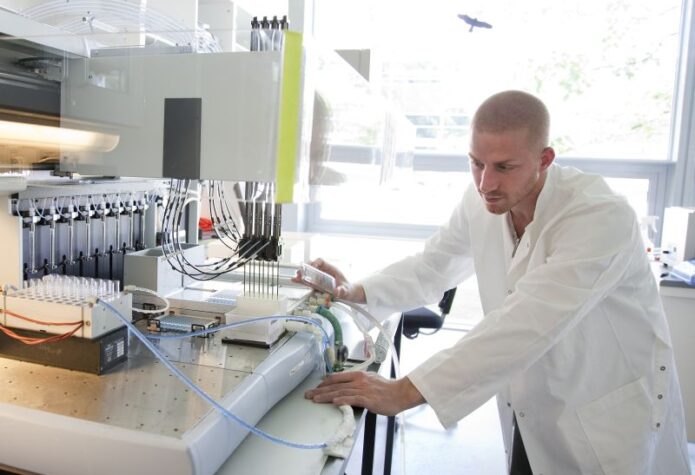Chr. Hansen: Food for thought

The global bioscience giant Chr. Hansen A/S is putting considerable efforts into developing new products and methods for the traditionally conservative food market.
In order to retain its position as a leading company in the bioscience market, Chr. Hansen aims to improve its already extensive R&D efforts. Consequently, Chr. Hansen plans to invest annually up to 7% of its sales revenue in R&D during the coming years. The Nordic Investment Bank is financing the project with a loan of EUR 75 million.
Esben Laulund is the Senior Vice President of the Culture and Enzyme Division with 200 innovative employees working in Denmark on product development. According to him, being a technology leader with innovations is a prerequisite for a bioscience company.
“We focus on finding bacteria, enzymes and colours in nature and refining them to be used in industrial processes. One of the key areas in the R&D project is to discover innovative solutions for cheese production in order to reduce production costs,” Mr Laulund explains.
“There is a growing awareness among consumers of the health effects of food. As an example, we are looking at ways of reducing the amount of sugar in yogurt products. Another attractive product for the market is cheeses with a lower level of sodium,” he continues.
In addition to developing natural ingredients for the food, pharmaceutical and agricultural industries, Chr. Hansen is also focusing on optimising processes as a part of the R&D project.
“We are the largest producer of starter cultures in the world. Currently, we are investigating our processes to raise our earnings from our fermented products,” Mr Laulund states.
The company was founded in 1874 by a Danish pharmacist, Christian Hansen, when he was able to standardise the strength of the calf stomach enzyme used in cheese production. Early on, developing new methods and using bioscience became an important part of the company. The company expanded and established itself in the US in 1878. The US is still an important market for Chr. Hansen but Europe remains the primary one.
Today, fundamental research activities are carried out in Denmark, while the main production sites are based in Denmark, Germany and the US.
“Apart from the research we do in-house, we also collaborate extensively with universities, both in Denmark and elsewhere. We aspire to identify the best research teams, the ones that are world class,” Mr Laulund says.
“The food industry is traditionally conservative, but there is still room for new products. On average, we introduce 50 to 80 new products to the market each year. What we look at is how well the products sell. We plan to increase the market share of products that have been on the market for five year or less from 23% to 25%. In connection with this we are looking to issue more patents,” Mr Laulund describes.
Receiving external financing to develop new products is important. In addition to the NIB loan Chr. Hansen also receives governmental funding from Denmark as well as EU funding for parts of its research programmes.
“In the future, retaining high product quality throughout the shelf life of products will be increasingly important as transportation distances grow. Another focus area for us is the health effects of food products. Consumers are looking for products that have positive impacts on them. The probiotic field will therefore be a key focus area for Chr. Hansen,” Mr Laulund envisions.
